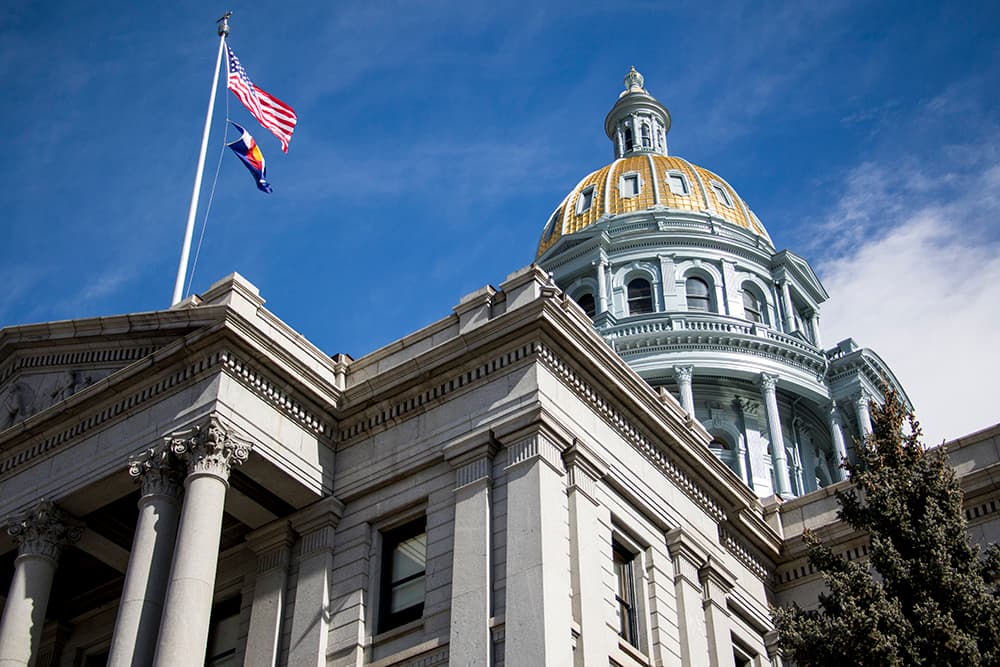
Gov. John Hickenlooper wants to put an extra $200 million into education next year and another $100 million in the 2019-20 fiscal year, but a lot of that money could go to offset hits to districts from anticipated reforms to the state’s pension program and reductions in local tax revenue.
The proposal comes in response to new economic forecasts released Monday that show Colorado having more money than previously expected.
Legislative economists predict that lawmakers will have a whopping $1.3 billion or 11.5 percent more to spend or save in 2018-19 than is budgeted in 2017-18. The forecast from the governor’s Office of State Planning and Budget predicts similar increases in revenue. After meeting the reserve requirement of 6.5 percent, Colorado will have an additional $492 million in reserve for this fiscal year, and even with a higher reserve of 8 percent proposed for next fiscal year, the state would have an additional $548.1 million in 2018-19.
It’s normal for the forecasts to be slightly different because the economic analysts often use slightly different assumptions. In this case, the governor’s office predicts that the additional revenue will be more spread out over this fiscal year and the next one, while legislative economists think more of the money will be coming in next year. That difference means the legislative forecast shows the state potentially hitting the revenue limits imposed by the Taxpayer’s Bill of Rights, despite lawmakers making more room under the cap just last year, while the governor’s forecast does not.
These are the numbers that the Joint Budget Committee has been waiting for to finalize its recommendations for the 2018-19 budget year. Republicans and advocates for more transportation spending have already seized on the numbers to support a plan to ask voters to approve new debt to pay for road construction and dedicate up to $300 million a year to pay off that debt.
Of course, these forecasts are also inherently speculative – and legislative economists warned these forecasts contain even more uncertainty than usual.
State Rep. Millie Hamner, the Dillon Democrat who chairs the Joint Budget Committee, summed up the message as one of caution about dedicating too much of the new revenue to ongoing expenses. The more that gets committed, the harder it will be for the state to meet all of those commitments in future years.
Those who want to see Colorado spend more on K-12 education have pushed back on the Republican roads bill out of fear that the commitment could make it harder to send more money to schools in the future.
The governor’s budget director Henry Sobanet recommended treating much of this new money as “one-time” funds that should go to “one-time” uses. In a letter to the Joint Budget Committee, he laid out a plan.
In the case of roads spending, he’s recommending an extra $500 million for road construction in 2018-19, but only $150 million in 2019-20. And in the case of education, he’s recommending an additional $200 million in 2018-19 and an additional $100 million the following year.
However, this extra money might not show up in classrooms – or rather, it might show up in a lack of cuts rather than new money.
The governor’s budget request already called for a reduction in the budget stabilization factor of $100 million. That’s the amount by which Colorado underfunds K-12 education compared to the requirements of Amendment 23. In this budget year, it’s $822 million, after a mid-year adjustment. Some of the extra money could go toward reducing it even further.
However, Sobanet said he envisions most of it going to offset reductions in local property tax revenue that will be caused by a provision of the Colorado constitution that governs the ratio between residential and commercial property tax revenue.
It’s also possible that school districts could end up having to pay more toward some sort of agreement on changes to the Public Employees’ Retirement Association, or PERA. The final form of reforms to PERA is far from certain.
“Another downgrade in the residential assessment rate means more state share to keep total per pupil spending up,” Sobanet said. “We know that since the December announcement of property taxes and since we know PERA might be on the table for something, let’s set aside some resources and make sure we can handle this.”
Chalkbeat is a nonprofit news site covering educational change in public schools.












